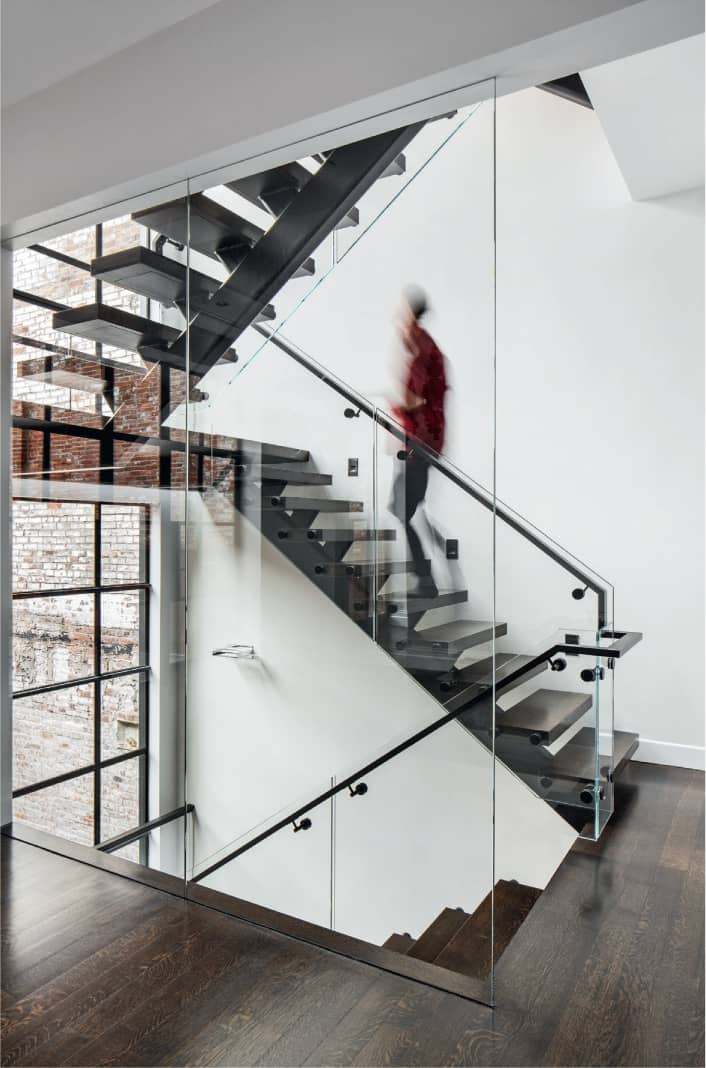14 Circulation
The method by which users move through space.
When we move through space, we use our senses to determine the most efficient route from A to B. This ease of movement, or circulation, is critical to conceptually planning interior space, and to ensuring that levels of comfort and safety are met. There are several ways in which circulation can affect a design, both along a route and vertically.
Horizontal Circulation Hallways, entries, and exits, ways through a room. Affected by placement of furniture and width dictated by code.
Vertical Circulation Stairs, escalators, and elevators.
Circulation is also closely connected to the program of a space—there is more circulation required in a hotel than a private residence, and the occupancy load will dictate the width that corridors and hallways will be. Efficient circulation is critical to designing a project, and is an important factor in determining the total usable area of a project. This is especially important when performing initial programming studies on a commercial space.

Circulation Area
The space in a plan that is not programmed or programmable, in square feet/square meters.

Circulation Factor
The circulation area divided by the usable square feet/meters.

Circulation Multiplier
The net area divided by the circulation area.


Circulation and program are intertwined. Stairs and elevators, when carefully considered, can have an impact on the experience of a space.
